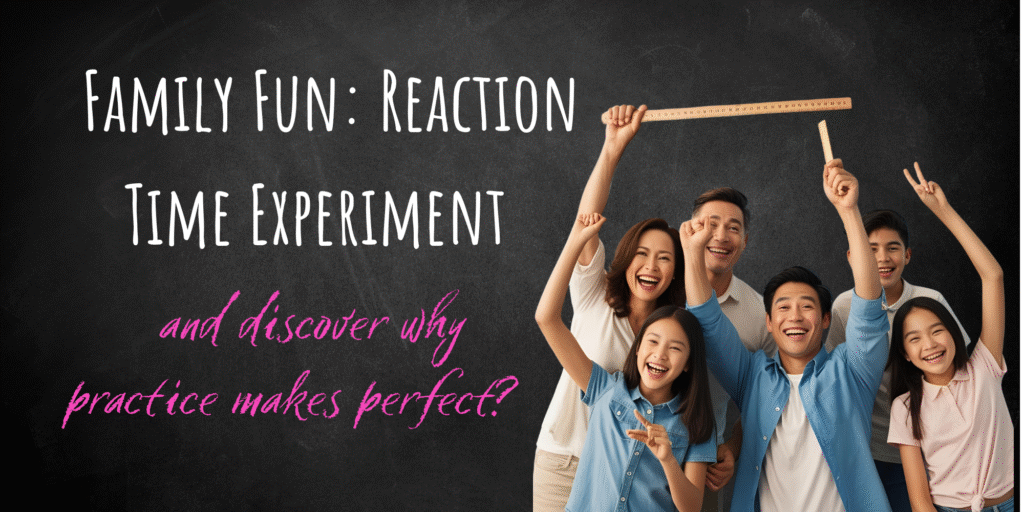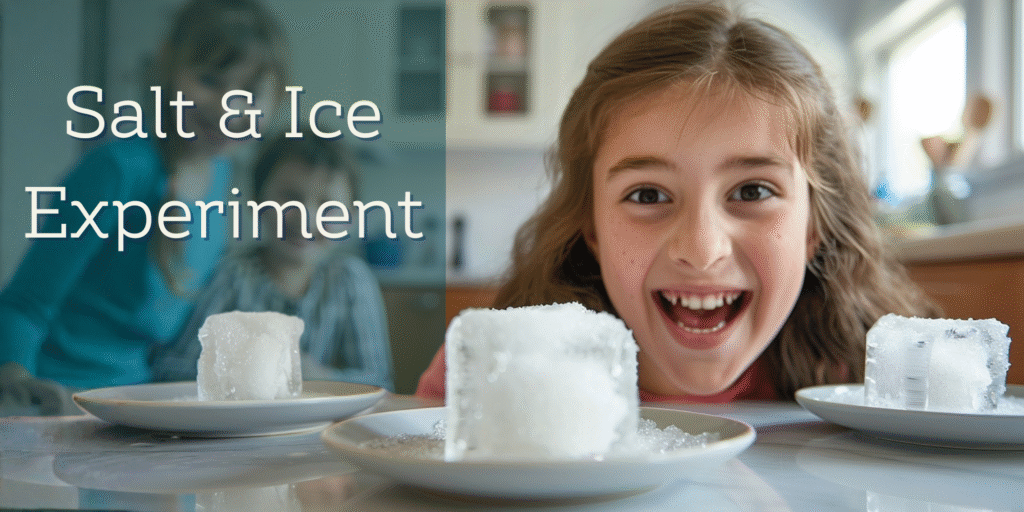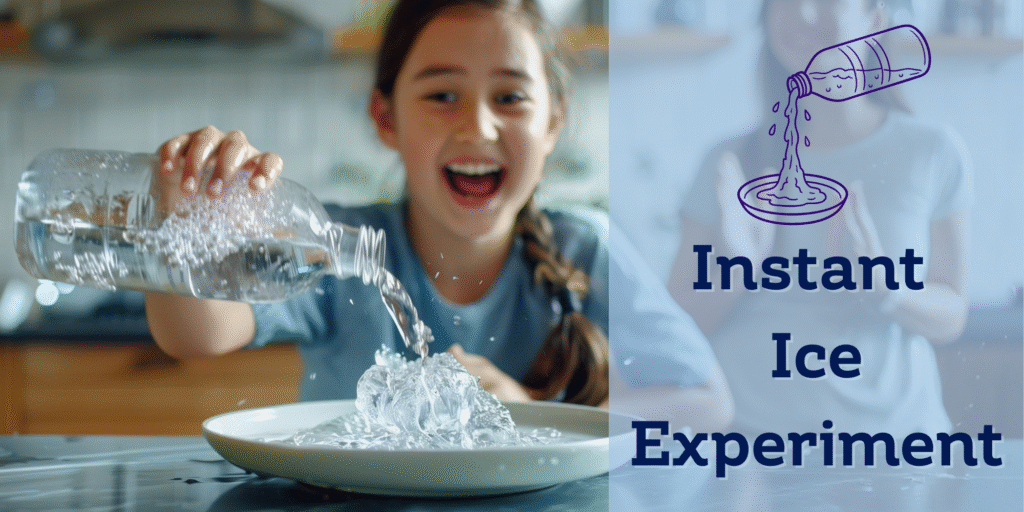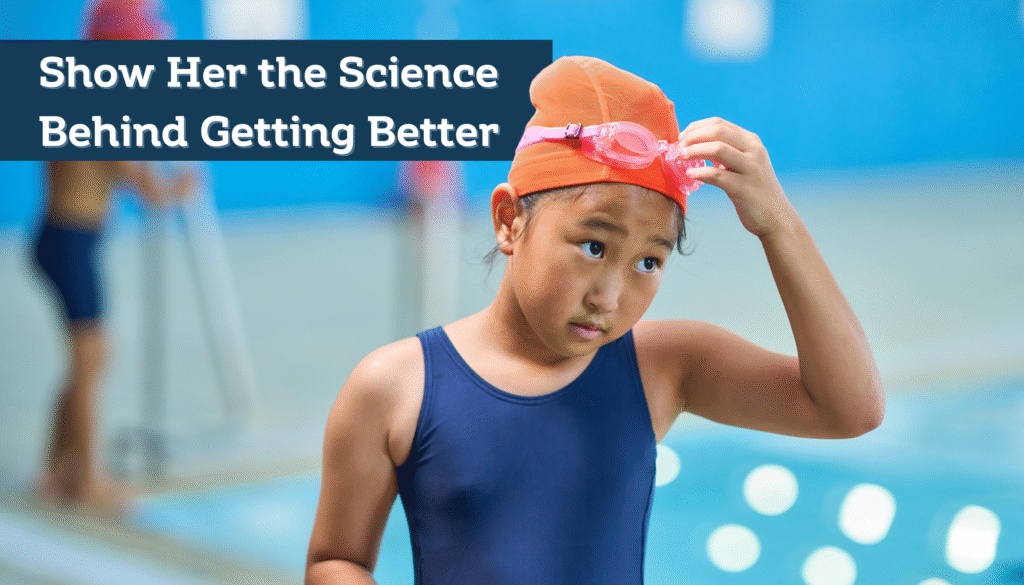Ever told your child that “practice makes perfect” and got an eye roll in return?
Here’s your chance to prove it’s not just a saying—it’s backed by neuroscience. With nothing more than a ruler and a few curious minds, this fun experiment can show your child how their brain and body work together—and how they can actually get better at something through repetition.
This isn’t just about testing reflexes—it’s about understanding growth mindset in action. When your child learns that their abilities aren’t fixed, but can improve with effort, they’re learning something powerful: they are not stuck. That belief alone can change the way they approach school, friendships, goals, and challenges for the rest of their lives.
And the best part? This simple activity is fun, memorable, and brings the whole family together in a shared moment of discovery.
What Is Reaction Time?
Reaction time is how long it takes for you to notice something (like a ruler dropping) and then respond. It’s measured in seconds—or even milliseconds—and it tells us how well our nervous system is functioning.
Here’s what happens when your child catches a falling ruler:
- Their eyes see it drop.
- A message shoots to the brain: “It’s falling!”
- The brain sends an instant signal to their hand: “Catch it!”
- Their fingers grab the ruler.
All of that in a blink—and it gets faster with practice.
Try This Growth mindset Experiment for Tweens: The Ruler Drop Experiment
A great way to explore the nervous system, reaction time, and how practice leads to improvement.
What You’ll Need:
- A long ruler with centimetre markings
- A desk or table and a chair
- A partner to drop the ruler
- Pen and paper to track results
- Optional: a blindfold to test reaction to sound instead of sight
How to Do It:
- Have your child sit with their arm resting on the table, hand over the edge.
- Hold the ruler vertically with the zero end near their hand and the higher numbers at the top.
- Without warning (but within five seconds), let go.
- Your child tries to catch the ruler as fast as possible—no reaching up, just pinch where they can.
- Record the number where they caught it.
- Repeat three times and calculate their average.
👉 Lower number = faster reaction time
Extension: Try the same test with closed eyes. Say “Go!” as you drop the ruler. Which reaction is faster—sight or sound?
Let’s Talk About Practice
What happens when your tween tries this growth mindset experiment again tomorrow? Or 10 more times today?
Chances are—they’ll improve.
Why? Because their brain is creating a shortcut. The more we practise, the stronger and quicker the connection becomes between our brain and muscles.
Neuroscientists call this neuroplasticity—As neuroscientist Dr. Tara Swart explains in her book The Source, every time a child repeats a skill or thought, they strengthen the brain pathways that support it. This is neuroplasticity—the science behind the saying “practice makes perfect.” Neuroplasticity is our brain’s ability to rewire itself through repeated use. It’s how:
- A pianist plays faster
- A footballer nails a tricky move
- Your child finally learns to ride a bike
So yes, practice makes progress—and that progress is real, measurable brain growth.
Why This Matters
This tiny experiment packs a big punch.
It teaches kids:
- How their nervous system works
- That they can improve with effort
- That “I’m just not good at this” is a mindset, not a fact
And best of all, it creates a shared, hands-on learning moment for your family. Something small, simple, and empowering.
Final Thoughts: It’s Not Just a Ruler—It’s a Lesson in Growth
This experiment is more than fun science. It’s a moment that could change how your child sees themselves.
Because when they see that they can improve with effort, when they feel the shift in their own performance after just a few tries—that’s when confidence starts to grow.
They’ll start to believe:
“I can get better at this.”
“I’m not stuck—I just need to keep going.”
“I can figure things out.”
That’s growth mindset in action. That’s empowerment.
So go ahead—get out a ruler, gather the family, and have some fun. You’ve got everything to gain. And if all you do today is help your child believe in their own ability to grow—you’ve done something amazing.
Looking for More Hands-On Science?
Try these experiments next:
- Make Your Own Shoebox Camera
- Extract DNA From a Strawberry
- 5 Family Science Experiments Everyone Will Love
And if you’re raising a curious girl who loves to explore the world, check out the Hey Smart Girl book series—where confidence meets curiosity on every page.







